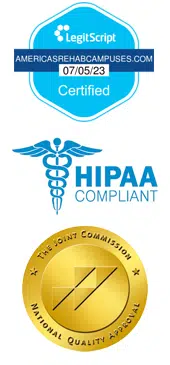 Delirium tremens, or DTs, is the state one enters when beginning the withdrawal process from heavy alcohol or drug abuse with the former being the more common cause. It’s a severe reaction from the brain and nervous system as it attempts to reconcile the lack of chemical-producing alcohol during detox.
Delirium tremens, or DTs, is the state one enters when beginning the withdrawal process from heavy alcohol or drug abuse with the former being the more common cause. It’s a severe reaction from the brain and nervous system as it attempts to reconcile the lack of chemical-producing alcohol during detox.
While delirium has its own scope of severity, it’s never a good idea to let DTs go untreated. Withdrawal experiences that involve DTs have some of the most impactful side effects of any withdrawal, including strokes, seizures and heart attacks that can be fatal if not addressed. Here are some of the common signs of delirium so you can know if you or someone around you needs emergency assistance.
How To Spot Delirium
Even simply drinking less alcohol than normal can spur these symptoms which is why we encourage anyone suffering from alcohol addiction to seek professional help for assistance during the detox and withdrawal process.
Some of the most easily recognizable signs of delirium include:
- Short temper and irrational reactions
- Confusion and loss of focus
- Insomnia
- Anxiety
- Fear
- Trouble accessing memories
- Hallucinations
- Delusional thoughts
- Heavy sweating and breathing
- Fever
How Long Does Someone Experience Delirium?
Delirium is a severe but quick set of symptoms that often makes for the hardest experience in the journey to sober living. The onset of symptoms begins within 72 hours of the last drink and can last for 7-10 days in some cases.
It’s important to understand that not all symptoms will appear at once. You can stop experiencing heavy sweating three days in but could run into bouts of confusion during days five and six, all of it being part of the process.
Seeking Treatment Before Delirium Becomes a Concern
DTs should never be taken lightly. Even if it’s a known risk that someone is wanting to undergo for the sake of sobriety, anyone experiencing the symptoms requires immediate medical attention to keep the symptoms from going from mild inconvenience to life-threatening changes within the brain and nervous system.
The delusional state many go through can also lead to violent outbursts during withdrawal as the confusion and inability to piece together coherent thoughts becomes overwhelming. Taking all of the risks into consideration, it’s easy to see why having a dedicated and medically staffed area to undergo detox in is key.
If the idea of DTs has you concerned for yourself or someone else looking to change to a sober life, rest assured that with the proper care you can get through the hardest parts with more comfort than you thought possible for such an intense experience. Medical treatment through sedation, IV hydration and mood stabilizing medicines help you weather the storm that is DTs.
Once DTs is no longer in the picture, treatment can begin for the addiction to alcohol that led to DTs in the first place. If the initial detox happened at the same facility you’ll receive treatment, you’ll be able to transition smoothly into the next steps.
Those still needing a rehab program or center should reach out to the specialists here at America’s Rehab Campuses to discuss the resources we have available with a private consultation.

